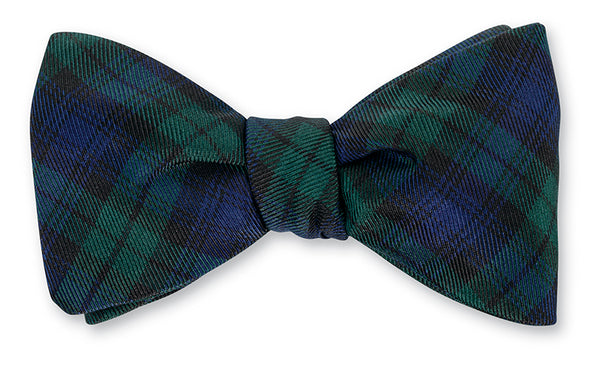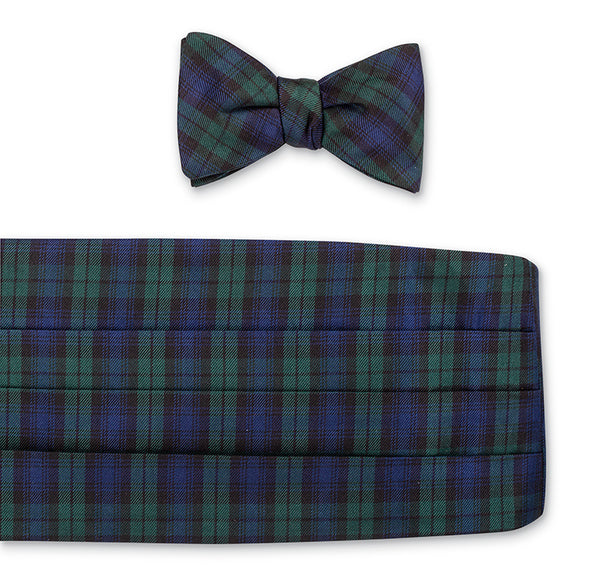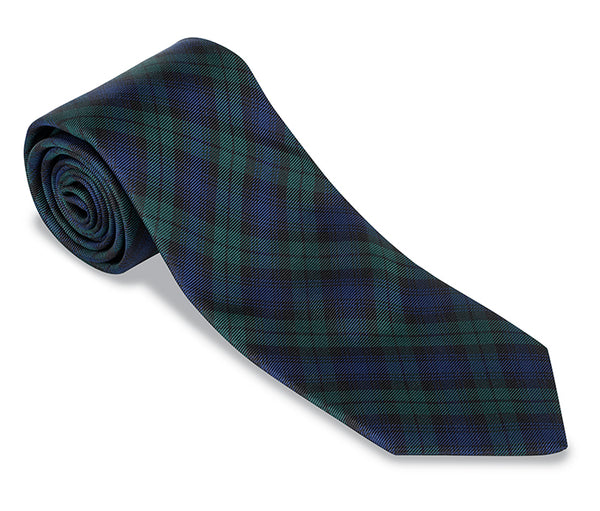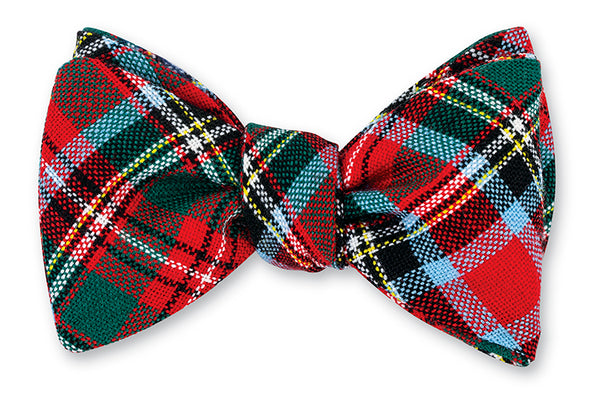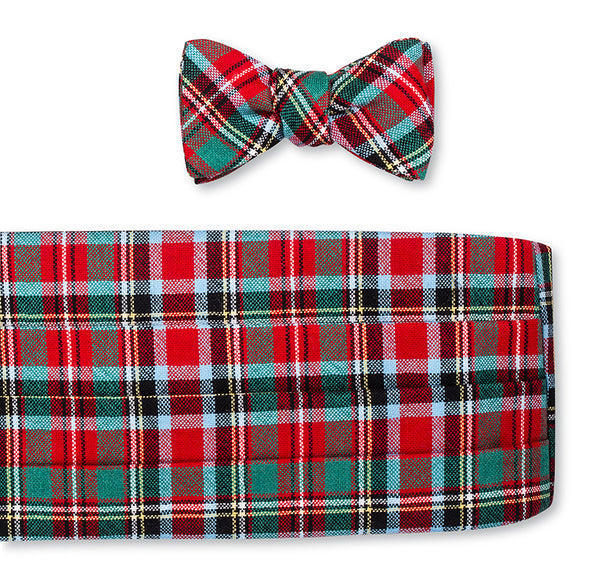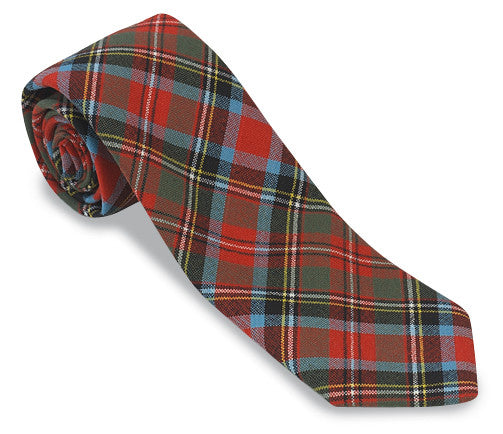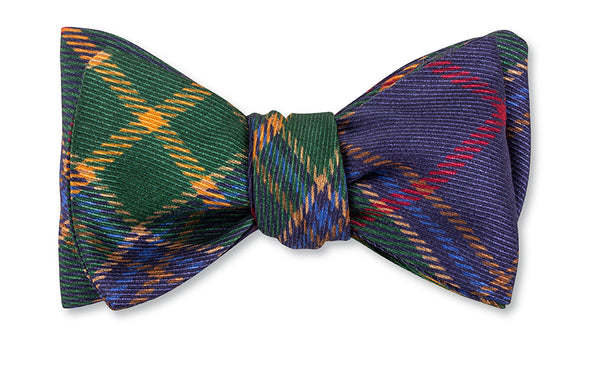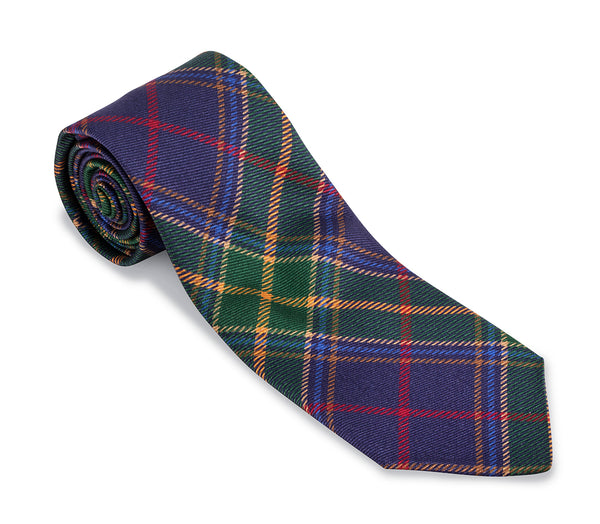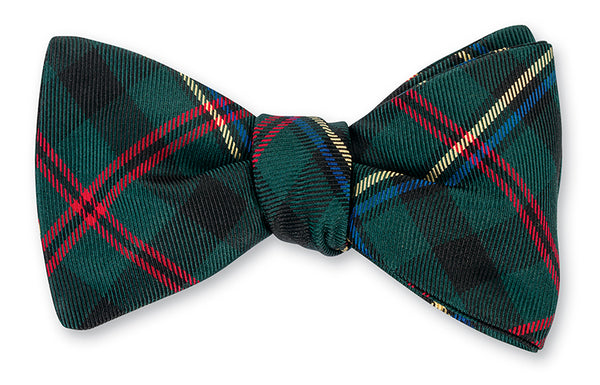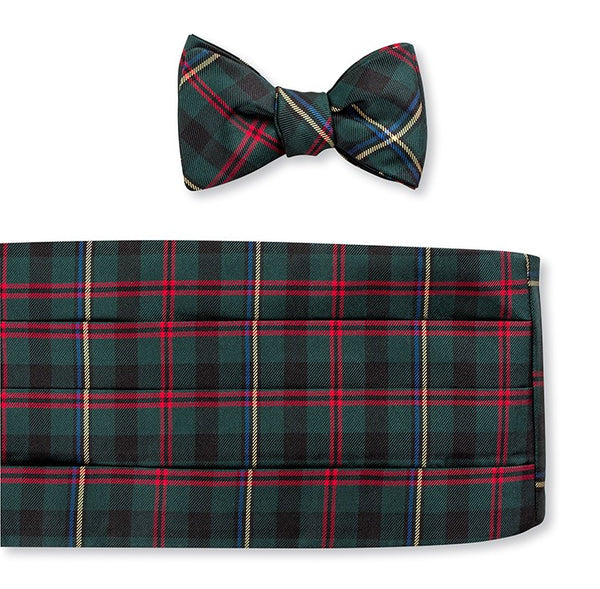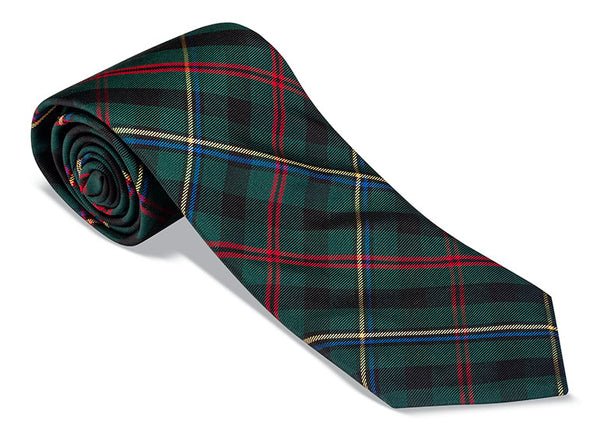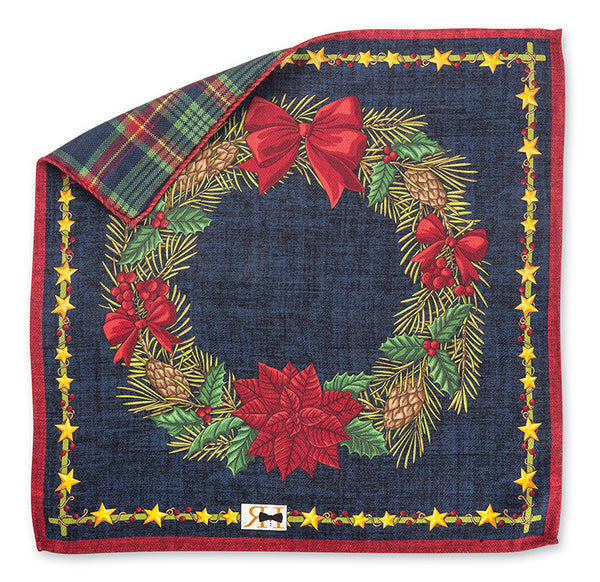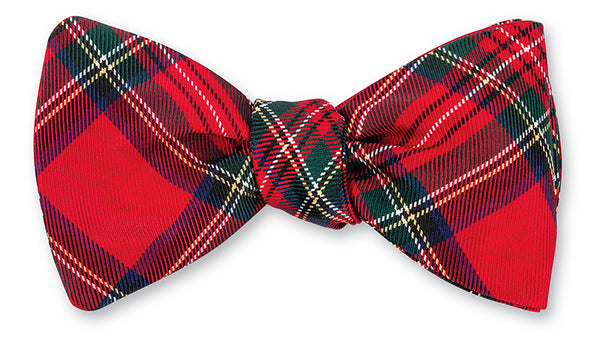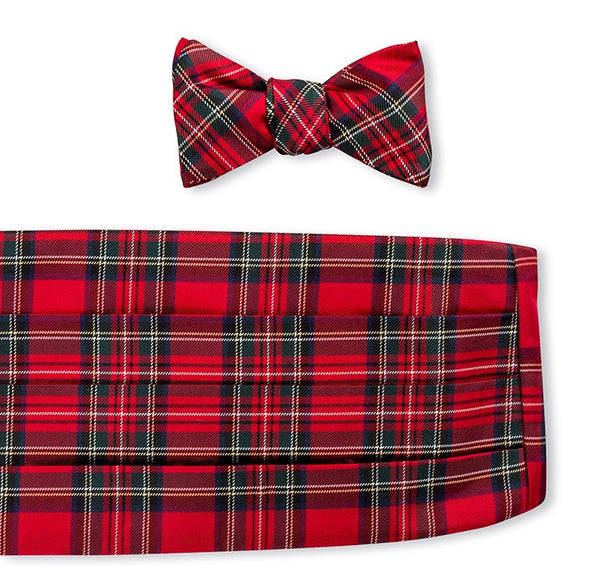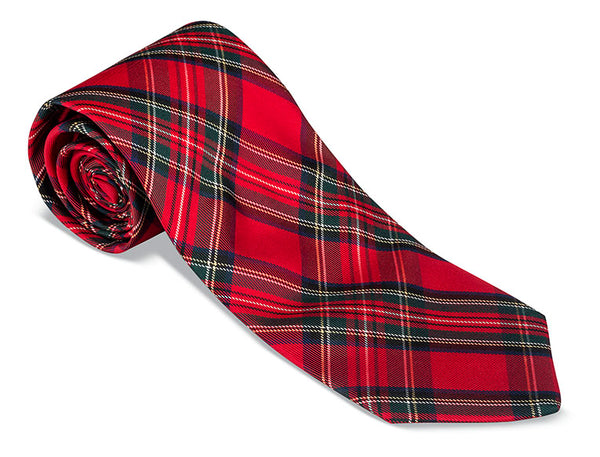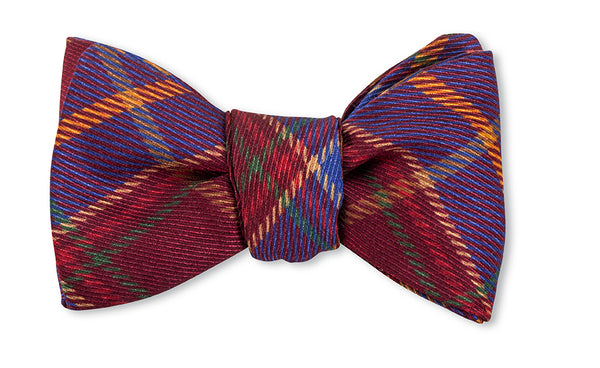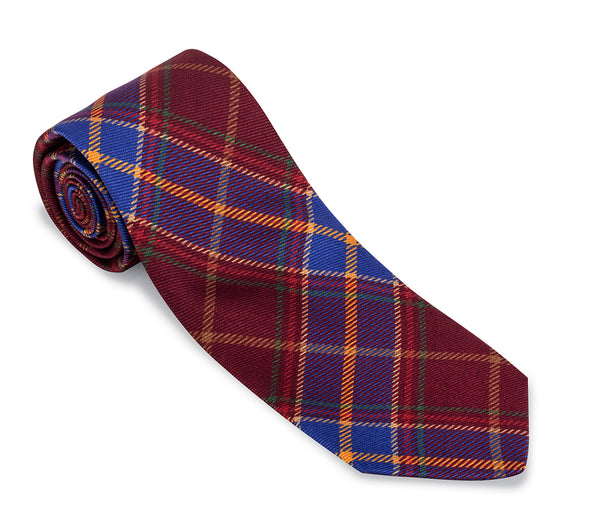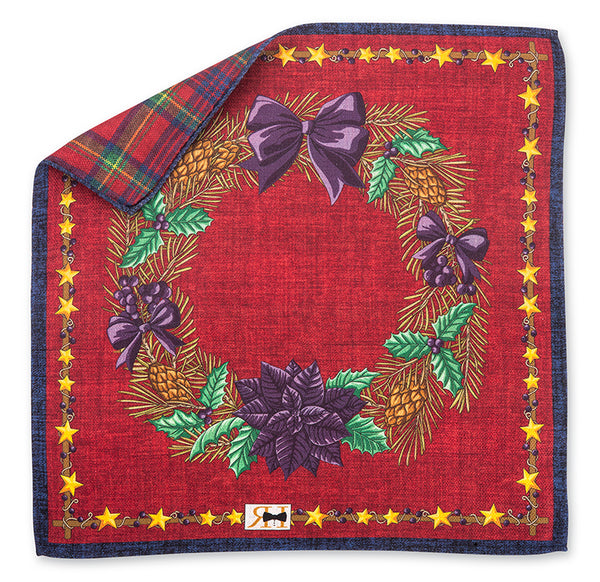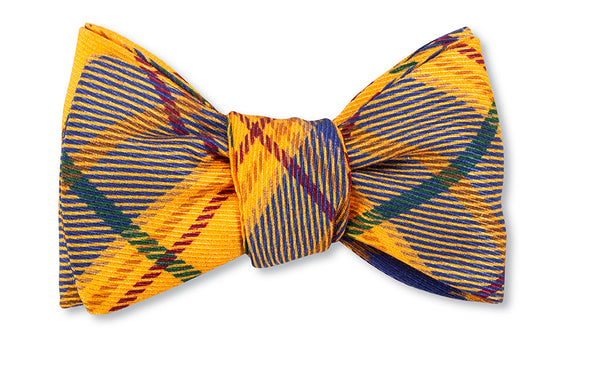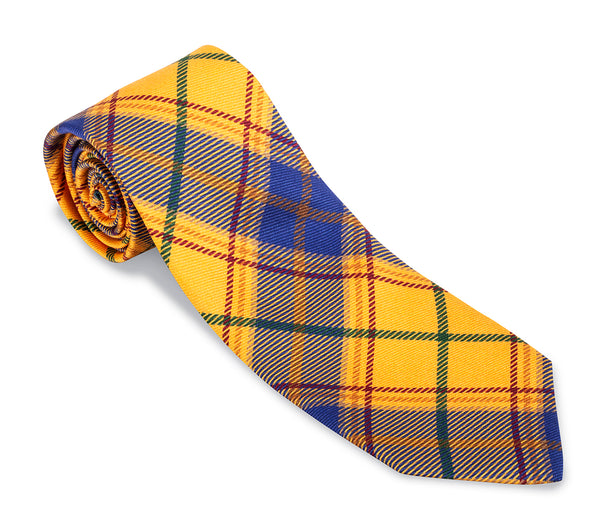The Tartan Collection
We carry a variety of tartan bow ties, neckties and cummerbund sets. The historical tartan pattern, originated in the Scottish Highlands, is created with a unique design of colored stripes running in both the warp and weft of the cloth.
Today, over half of the states in the US have tartans, many of which have been officially adopted by their state's government, including our home state's Carolina tartan. Enjoy browsing The Tartan Collection below:
The R. Hanauer Process
Each and every R. Hanauer tie is made by a talented team in our Fort Mill, SC workshop. Our bow ties are made to order and made by hand. The specific types of silk, cotton, linen, and wool fabrics for our products are always carefully selected by Randy and Randall Hanauer, our father-and-son team. We feature exquisite fabrics, like Italian silk, from renowned international mills in our collections. When the order process has begun, our ties are cut by hand on the table. As opposed to the straight of grain, our bow tie fabric is cut on a bias to produce the best-tying bow tie on the market. Cutting on the bias allows the pattern to be cut out at a 45-degree angle to produce the gentle stretch of the fabric for the ease of tying. A bias-cut lining is in each and every one of our bow ties to ensure that the structure and shape will always remain in its best condition. We are proud and dedicated to making American made bow ties, neckties and cummerbund sets in our hometown of Fort Mill, South Carolina.
History of Plaid and Tartan
While the term “plaid” is now a widespread word understood among the population of the world, its origins were a bit different. “Tartan” was the first proper term for the pattern used back in the 1500s by the Scottish to distinguish clans from one another. The first use of the word “plaid” as we consider it now was later adopted when British and American manufacturers began to popularize the pattern for means of fashion. The oldest recorded use of the fabric goes back 3,000 years. The fabric was found buried in the Chinese desert on a mummy referred to as “the Cherchen Man.” Specifically, the Tartan fabric is made with pre-dyed threads woven through one another. Originally, the threads were dyed with pigments from vegetables or plants. The specific pattern of over-and-under gives a unique style and appears that new colors are created by the blending of the other shades. The distinct pattern of squares and lines together are called a “sett.” Over time, tartan went from being a Scottish family symbol to a military uniform. The Scottish Rebellion between Scotland and England brought major tension during 1745, eventually bringing on a dramatic effect on clothing in that time. The tartan pattern was banned in the country under the Dress Act for almost half a century. In 1782, it was legalized to wear the tartan pattern as we know it today. It soon became a widely known fashion staple for formal balls and occasions in reference to the Scottish Highland kilt and dress attire for men.
Jumping into the 19th century, America began to adopt the style in its everyday menswear. Plaid clothing soon found its popular niche in lumberjacks, cowboys, and hunters because of the durability and masculine image. Later after it made its appearance across the world, especially in America, it became synonymous with a more daring and eccentric style. . It had many ties to rock bands and an overall message of being expressive of one’s individuality, a trait which the pattern can still claim today.
The Statement of a Tartan Bow Tie
Given its historical significance, choosing to add a tartan bow tie to your wardrobe can say something about a gentleman. Sporting traditional tartan bow ties can help to establish a sense of pride and respect. In regards to its Scottish origin and significance, the plaid pattern stands for honor and family. This would suggest that you are a loyal and strong gentleman, but still possess modesty. An R. Hanauer tartan bow tie would show off that a gentleman has a traditional soul with a modern flair.
A tartan bow tie illustrates a gentleman’s masculinity since the pattern has always been a prime component of menswear. Because of its traditional roots, tartan bow ties a very appropriate for a formal setting but a tartan bow tie could also be paired with a sweater for something a bit more casual. Tartan bow ties, no matter the specific pattern, have stood the test of time and have shown that it will never go out of style. R. Hanauer is proud to showcase these custom and handmade tartan bow ties.

